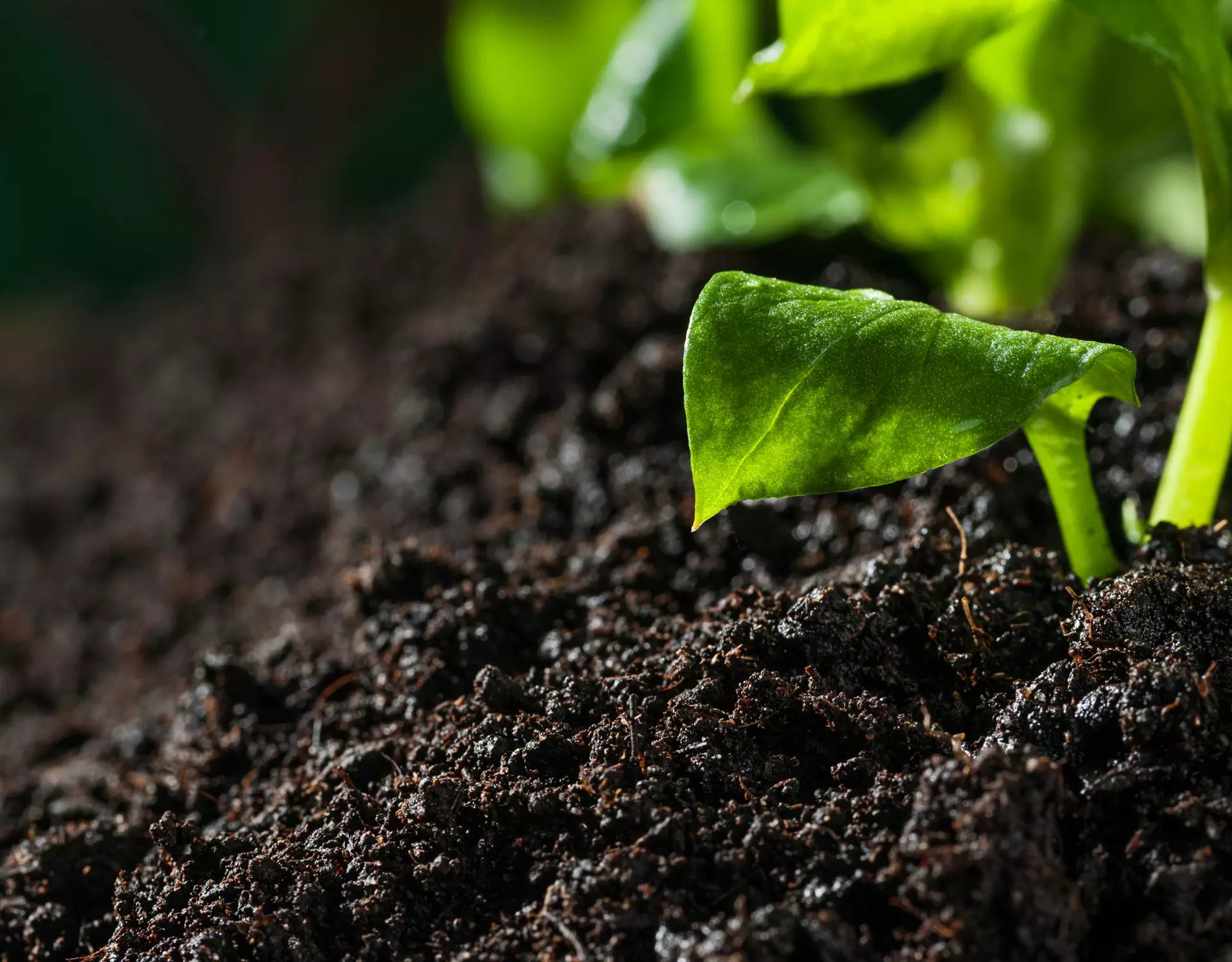Share this
Benefits of soilborne disease suppression
by Naz Hatay on 07/Apr/22
What is the soil disease risk?
Soilborne diseases refer to “the diseases that are caused by pathogens which persist (survive) in the soil matrix and in residues on the soil surface are defined as soilborne diseases” (1). Soilborne diseases are considered a major problem to crop yield.
Soilborne plant pathogens such as Pythium spp., Rhizoctonia spp., Sclerotinia spp., Fusarium spp., Verticillium spp., and Phytophthora spp. can cause greater losses and persist for many years in the plant residues, organic matter, and in the form of spores. Thus, the early detection of these microorganisms in the soil could help farmers optimize their crop yield by suppressing pathogens and avoiding disease development.
Do you want to learn about early disease detection? Check out our BeCrop Test. With data-driven soil health knowledge and early disease risk detection, you protect your crops and increase resilience to extreme conditions.
Soil Diseases impact on agriculture
Soilborne pathogens are some of the biggest challenges for any stakeholder in the agriculture industry. Soilborne plant pathogens such as Rhizoctonia spp., Pythium spp., and Phytophthora spp. can cause yield losses of up to 75% (2).

Additionally, they cause 10 to 20 percent more diseases when compared to the number of diseases caused by seed-borne and air-borne pathogens (3). To date, research has shown that innumerable yields of vegetable crops such as wheat, cotton, and maize were negatively affected.
According to Panth et al.’s article, “In the United States, soilborne plant pathogens are responsible for about 90% of the 2000 major diseases of the principal crops” (4). This elevated percentage proves the contention that unhealthy soils are directly responsible for plant diseases and pests.
Some of the most common soilborne diseases include pre and post-emergence damping-off, root rot, and vascular wilts (5). To examine these common soilborne diseases in a bit more detail, we’ll explain how they affect the plant and what negative physical appearances occur due to the disease.
- Pre-emergence damping-off results in seed rot or death of seedlings prior to emergence, before they appear above the soil surface (6).
- Post-emergence damping-off causes the stems to girdle. This condition is characterized by dark-colored water-soaked lesions that first appear on the roots and then spread up the stem until they reach above the soil line. Once the lesions expand above the soil line, they eventually cause the plant to wilt and die (7).
- Stem and root rot can impact plants beyond the seedling stage and are caused by species of soil-inhabiting fungi such as Rhizoctonia spp., Fusarium spp., and Pythium spp. (8).
- Generally, spots of various sizes and colors occur on the stem, at or near the soil level, and on the roots, causing the tips of fibrous roots to decay. According to the Texas Plant Disease Handbook, “Plants are often predisposed to infection by poorly drained soils, crowding, mechanical injury, over-watering, improper balance of plant nutrients or other factors that affect plant growth” (9).
- Finally, vascular wilts are characterized by plant wilting and excessive leaf death, caused by pathogenic fungi or bacteria which enter “the water-conducting xylem vessels of a plant, then proliferate within the vessels, causing water blockage” (10). Vascular wilts cause serious impairment of the entire - plant and eventual death, therefore, it is recognized as one of the most devastating plant diseases (11).
Whether it is damping-off or root rot caused by pathogens such as Fusarium spp., Verticillium spp.or Sclerotinia spp., soilborne diseases can reduce yields of many crop's insignificant levels. This, in turn, can lead to devastating consequences in the agricultural sector if not carefully managed. But before reaching that irreversible stage, the simplest and easiest solution is twofold: keep the soil healthy, and sustain that health with proper agricultural management.
Soil health in relation to soil diseases
As mentioned many times in our previous articles, the soil should be treated as a living and highly complex, dynamic ecosystem. It harbors and supports the extreme diversity of micro and macro-organisms. And, in turn, these organisms are responsible for regulating the soil's properties. In other words, the presence of these organisms is detrimental to the overall health of the soil for plants and any crop that grows in that soil.
According to van Bruggen et al., “soil health may be associated with biological diversity and stability. Plant and animal disease outbreaks can be considered as indicators of instability and poor ecosystem health” (12). There may be a connection between soil health and the ability of the biological community to suppress plant pathogens, “therefore the ability of disease suppression may function as an indicator for a stable and healthy soil ecosystem” (14).
It is a well-known fact that plants growing in disease-suppressive soil resist disease much better when compared to plants in soils with low biological and microbial diversity. This is why the health of macro and microorganisms in the soil should be our highest priority, especially if we aspire to sustainable agricultural practices that serve the health needs of the current population and feed future generations to come.
To conclude, finding the best crop management strategies to prevent, avoid and control diseases are key to sustainable agricultural productivity. For instance, as the implementation of more organic farming practices will promote the soil microorganisms and the disease-suppressive capacity, they will positively impact the disease management programs and reduce disease risks. Cover crops, precise application of agricultural inputs, and other regenerative agricultural land management practices can help reduce soil diseases and result in optimal soil health and crop yield.
Bibliography
1: Soilborne Diseases in Crop Plants and Their Management - Veena DR1, Priya H R2, Raheesa M Khatib1, and Divya Joythi3 -https://www.rroij.com/open-access/soilborne-diseases-in-crop-plants-and-their-management.php?aid=33851
2: Panth, Milan & Hassler, Samuel & Baysal Gurel, Fulya. (2020). Methods for Management of Soilborne Diseases in Crop Production. Agriculture. 10. 10.3390/agriculture10010016. https://www.mdpi.com/2077-0472/10/1/16
3: The soil-borne pathogen/disease problems and management strategies: The Indonesia Experience https://ap.fftc.org.tw/article/2531
4: Panth, Milan & Hassler, Samuel & Baysal Gurel, Fulya. (2020). Methods for Management of Soilborne Diseases in Crop Production. Agriculture. 10. 10.3390/agriculture10010016. https://www.mdpi.com/2077-0472/10/1/16
5: UC Davis Global Soil Health Portal: Soil Borne Diseases http://soilhealth.ucdavis.edu/soil-challenges/soil-borne-diseases
6: Department of Primary Industries and Regional Development - Agriculture and Food - Government of Western Australia: Soil-borne diseases https://www.agric.wa.gov.au/diseases/soil-borne-diseases#:~:text=Types%20of%20soil%2Dborne%20diseases,fungi%20including%20Verticillium%20and%20nematodes.
7: Seminis-us.com: Damping https://www.seminis-us.com/resources/disease-guides/tomatoes/damping-2/#:~:text=Post%2Demergence%20damping%2Doff%20is,plant%20to%20wilt%20and%20die.
8: Texas A&M Agrilife Extension: Texas Plant Disease Handbook: Stem and Root https://plantdiseasehandbook.tamu.edu/problems-treatments/problems-affecting-multiple-crops/stem-and-root-rot/
9: ibid 8
10: ibid 9
11: The Microbial World: Vascular wilt diseases 1. Panama disease of bananas Produced by Jim Deacon Institute of Cell and Molecular Biology, The University of Edinburgh http://archive.bio.ed.ac.uk/jdeacon/microbes/panama.htm#:~:text=Vascular%20wilt%20diseases%20are%20caused,impairment%20of%20the%20whole%20plant.
12: ibid 11
13:Semenov, A. M., Kuprianov, A. A. and Van Bruggen, A. H. C. (2010): Transfer of enteric pathogens to successive habitats as part of microbial cycles. Microb. Ecol. 60, 239–249 https://www.researchgate.net/publication/43161502_Transfer_of_Enteric_Pathogens_to_Successive_Habitats_as_Part_of_Microbial_Cycles
14: Tripathi, Sachchidanand & Srivastava, Pratap & Devi, Rajkumari & Bhadouria, Rahul. (2019). Influence of synthetic fertilizers and pesticides on soil health and soil microbiology. 10.1016/B978-0-08-103017-2.000027.
Originally published April 20, 2021, updated April 7, 2022.
Share this
- June 2025 (2)
- September 2024 (1)
- August 2024 (1)
- July 2024 (1)
- June 2024 (2)
- May 2024 (2)
- April 2024 (2)
- March 2024 (1)
- February 2024 (1)
- January 2024 (1)
- November 2023 (1)
- October 2023 (1)
- September 2023 (1)
- August 2023 (2)
- July 2023 (2)
- May 2023 (2)
- April 2023 (3)
- March 2023 (3)
- February 2023 (2)
- January 2023 (1)
- November 2022 (1)
- October 2022 (2)
- September 2022 (1)
- August 2022 (3)
- July 2022 (3)
- June 2022 (1)
- May 2022 (5)
- April 2022 (7)
- August 2021 (1)
- July 2021 (1)
- May 2021 (1)
- April 2021 (4)
- November 2020 (3)
- October 2020 (4)
- September 2020 (1)
- August 2020 (3)
- July 2020 (1)
- June 2020 (1)
- May 2020 (2)
